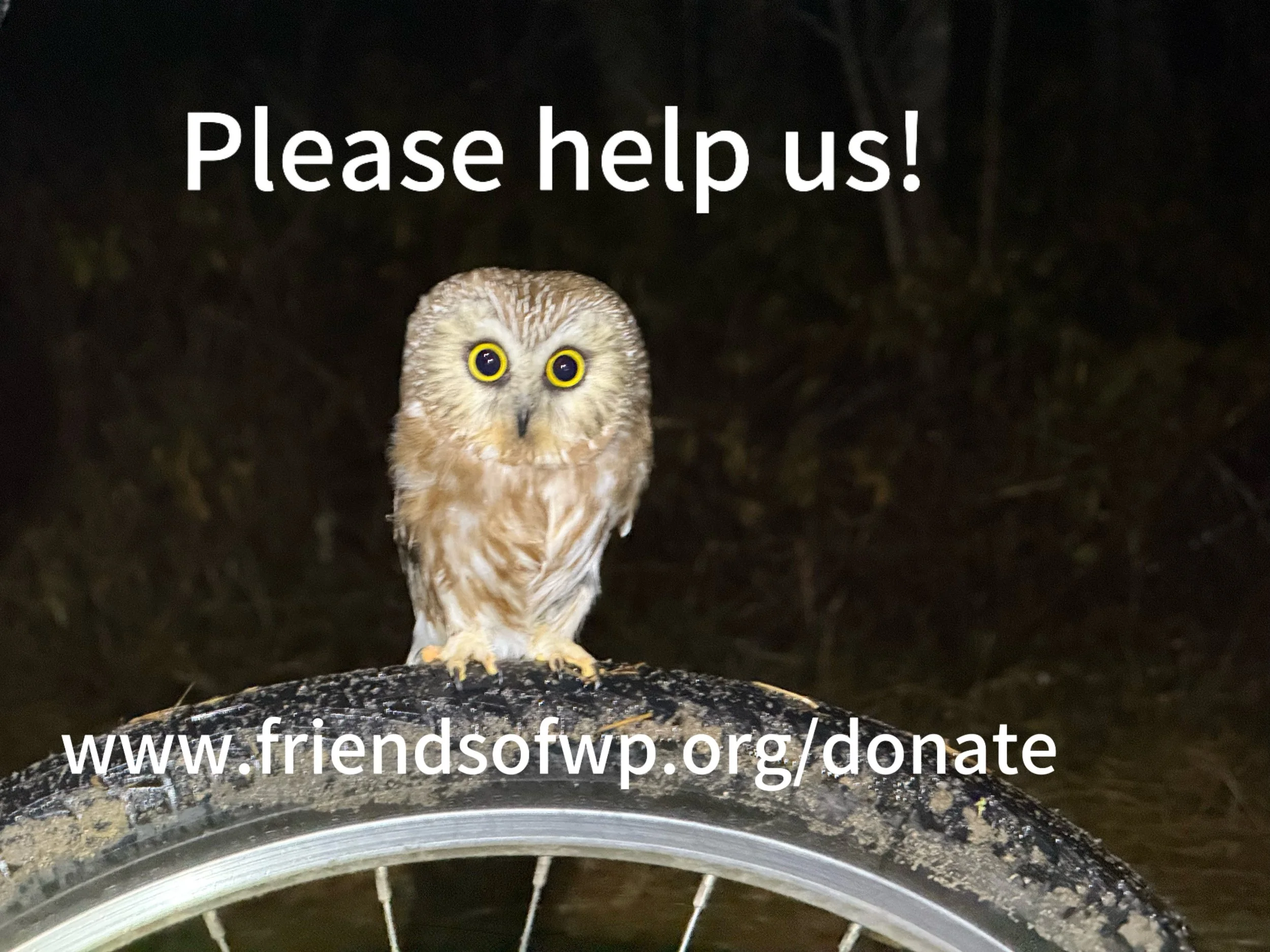Mid-July Summer Update
We just completed the second week of the summer season and the owls have been slow but steady. I’m happy to have been joined by Holly Erickson, who will be my banding partner for the season, at the start of the week. The juvenile Northern Saw-whet Owls (NSWO) have picked up a bit over the last few nights, with 14 being banded over the last five nights. Last night was the first night that juveniles outnumbered adults, with five juveniles and four adults banded. The bulk of the adults in the summer season occur during the first two weeks of July. We’ve banded 53 adults so far this season, which has us set up for what will likely be an above average season for adults. However, it is the juvenile NSWO that make or break a summer season.
We have banded 18 juveniles so far. At this date these results would make it extremely unexpected for this to prove to be a peak year for breeding success, particularly after last year’s high productivity. That said, these are better numbers at this date compared to previous summers when saw-whet’s breeding success crashed to their lowest points. It’s way too early to know what the season will bring, but hopefully the juveniles will continue to be steady, even if in lower than peak numbers. In the meantime, I have been appreciating Holly’s enthusiasm as she is having her first experience with juvenile saw-whets. Juveniles not only look different than adults, they also regularly have a completely different attitude. In comparison to adults, we think of them as disgruntled teenagers, as demonstrated by this very unimpressed juvenile.
A juvenile Northern Saw-whet Owl giving us the look. Notice the first white adult facial disc feathers coming in below its eyes, which is where the first ones always molt in.
Nature Notes: We’ve enjoyed the cuteness overload of a baby Snowshoe Hare a few times this week. I had to look up the terminology a couple of years ago when I saw my first one; a young hare is called a leveret. We’ve had some crazy moth activity, and this Wavy Chestnut Y below was one of my favorites. At about one inch long, it packs in a lot of beauty for its size. Below that is a video of some of the moth activity lately- there is no shortage of identification to be done!
Keeping the lights on:
We are getting closer to our fundraising goal for the summer- at this point we need to raise $1300 to be able to finish out the summer season and pay our banders for all the time and effort they have put into this project. Please help us get to the finish line and make it possible to continue this important research! And thank you so much to those who have donated, we and the owls really appreciate you.



